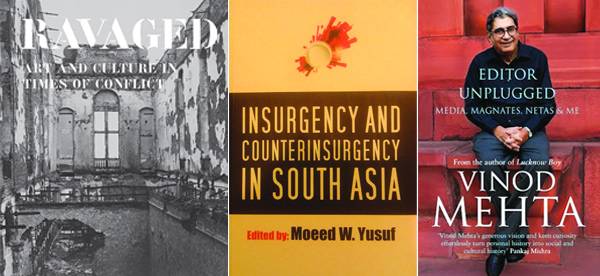
Napoleon the Great
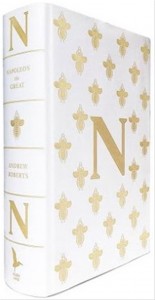
Andrew Roberts
Allen Lane [hardback], 2014
PRs 3,495
Awarded the Prix du Jury des Grands Prix de la Fondation Napoléon 2014, this is the definitive modern biography of the extraordinary Napoleon Bonaparte. In the space of just 20 years, from October 1795 when, as a young artillery captain, he cleared the streets of Paris of insurrectionists, to his final defeat at the (horribly mismanaged) Battle of Waterloo in June 1815, Napoleon transformed France and Europe. The impossibility of defeating his most persistent enemy, Great Britain, led him to make draining and ultimately fatal expeditions into Spain and Russia, where half a million Frenchmen died and his Empire began to unravel.
Historian Andrew Roberts conveys Napoleon’s tremendous energy, both physical and intellectual, and the attractiveness of his personality, even to his enemies. The author has walked 53 of Napoleon’s 60 battlefields and absorbed the new French edition of Napoleon’s letters, which allows a complete re-evaluation of this exceptional man. Roberts overturns many received opinions, including the myth of a great romance with Josephine. Of the climactic Battle of Leipzig in 1813, as the fighting closed around them, a French sergeant-major wrote: “… All shouted ‘Vive l’Empereur!’ and everyone charged blindly into the fire.” Readers of this biography will understand why this was so.
Editor Unplugged: Media, Magnates, Netas and Me
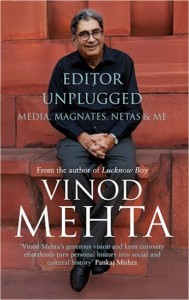
Vinod Mehta
Penguin Books India/Viking [hardback], 2014
PRs 1,195
Vinod Mehta’s new book takes forward the story of Lucknow Boy, recounting his experiences in the corridors of power in Delhi. His views on Narendra Modi, Arvind Kejriwal and the Nehru-Gandhi dynasty and his decoding of coalition politics and the significant changes ushered in by the 2014 Lok Sabha elections are expressed with Mehta’s characteristic sharp insights, wit and wisdom. So, too, are his analyses of the sweeping changes taking place in the print and TV media and his pen portraits of personalities such as Ratan Tata, Niira Radia, Khushwant Singh, Sachin Tendulkar and Arundhati Roy. Other chapters examine the lack of humour in India’s political life, the changing aspirations of the Indian middle class, and the author’s own mistakes and regrets. Peppered with anecdotes and gossip, every page of this honest, lively and irreverent book is both illuminating and entertaining.
Ravaged: Art and Culture in Times of Conflict
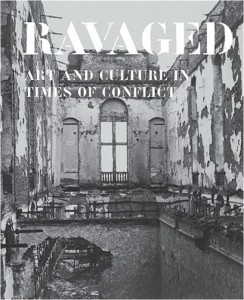
Ed. Jo Tollebeek and Eline van Assche
Mousse Publishing and M – Museum Leuven [hardback], 2014
PRs 9,625
The year 2014 marks the 100th anniversary of the assassination of Archduke Franz Ferdinand of Austria and the beginning of the conflict that would become known as World War I. In addition to the devastating loss of human life, the Great War was also responsible for the destruction of historic buildings and monuments, the theft of precious artworks, and the burning of untold numbers of books. Ravaged uses this anniversary as a poignant gateway to a greater discussion of the effect of war on artistic heritage.
Beginning with the Trojan War and weaving a compelling cross-cultural narrative that ends in the 21st-century Middle East, this affecting publication explores how cultural treasures often became silent victims of armed conflict. The illustrations highlight over 200 artworks and relics, which are often featured alongside complementary written reflections from contemporary artists. Edited by Jo Tollebeek, a cultural historian at KU Leuven, and Eline van Assche, associate curator at the M – Museum in Leuven, Belgium, this thoughtful book pays graceful homage to centuries of lost artistic treasures.
Darinday ki Pehchaan
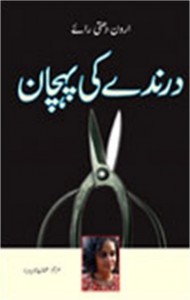
Arundhati Roy, transl. Shafqat Tanveer Mirza
Vanguard [hardback], 2010
PRs 350
The Shape of the Beast is our world laid bare, with great courage, passion and eloquence, by a mind that has engaged unhesitatingly with its changing realities, often anticipating the way things have moved in the last decade. In the 14 interviews collected here (translated into Urdu), conducted between January 2001 and March 2008, Arundhati Roy examines the nature of state and corporate power as it has emerged during this period and the shape taken by resistance movements. As she speaks, among other things, about people displaced by dams and industry, the genocide in Gujarat, Maoist rebels, the war in Kashmir, and the global war on terror, she raises fundamental questions about democracy, justice, and nonviolent protest. Unabashedly political, this is also a deeply personal collection. Throughout the conversations, Roy talks about the necessity of taking a stand and also the dilemma of guarding the private space necessary to write in a world that demands urgent, unequivocal intervention.
Insurgency and Counterinsurgency in South Asia
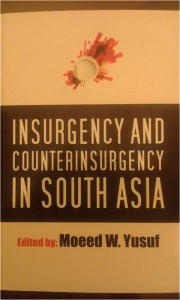
Ed. Moeed W Yusuf
Cambridge University Press/Foundation Books [paperback], 2015
PRs 1,195
Insurgency and Counterinsurgency in South Asia underscores the need for South Asian decision makers and relevant actors around the world to systematically examine the nature of intrastate insurgent movements. Using the “conflict curve” theory of conflict evolution, ten experts native to South Asia consider the trajectories of four of the most salient armed insurgencies in a region that has experienced many such sustained conflicts, and the counterinsurgent response to each. Case studies on India, Pakistan, Nepal, and Sri Lanka lend important lessons on the dynamics of each conflict, while collectively offering insights into how and why insurgencies occur and transform as well as how they can be prevented or resolved.
Through a peace-building lens, the contributors ask: What incentives led resentful groups to resort to armed insurgency? And, once the insurgency was underway, how was it managed? While many studies of insurgency and counterinsurgency emphasize military tactics and terrorism responses, this volume hones in on policy-relevant conclusions pertinent to the peace-building field. Detailed maps created especially for this volume illustrate the conflict regions. Emphasizing nonviolent means to prevent or mitigate conflict, Yusuf and the contributors highlight the opportunities and constraints in applying peace-building approaches across the conflict curve, identifying recommendations for the disputing parties as well as for peace builders.

